Did you know that Buenos Aires has many beautiful places to visit beyond the Capital? It is normal for foreigners to reside in the City of Buenos Aires and travel around the limits of the capital. However, Buenos Aires is a territory that extends beyond the City, both to the north and to the south and west.
From beaches to ranches, through mountains and towns, Buenos Aires hides many places to visit. In some cases, a tour by vehicle or bus is enough, while in others you will need to dedicate a weekend for your getaway. But trust me: it’s worth it.
The 10 Best Places in Buenos Aires to Visit Outside the City
1. Costa Atlántica (Partido de la Costa)
The Costa Atlántica is the most popular vacation destination for national tourists, particularly during the summer. Each year, millions of tourists stay in hotels, hostels, and apartments in the Partido de la Costa to enjoy the beaches, the sea, and the pleasant climate.
The region, also known as “La Costa,” comprises several seaside towns along the Atlantic Ocean, each with its own charm and unique attractions.
The Costa Atlántica features vast beaches, some of which remain pristine, sand dunes, and forests that stretch along the coast, giving rise to small settlements perfect for relaxation. The climate is generally temperate with distinct seasons, being warm between December and February, while March can still be warm but with possible cold air intrusions.
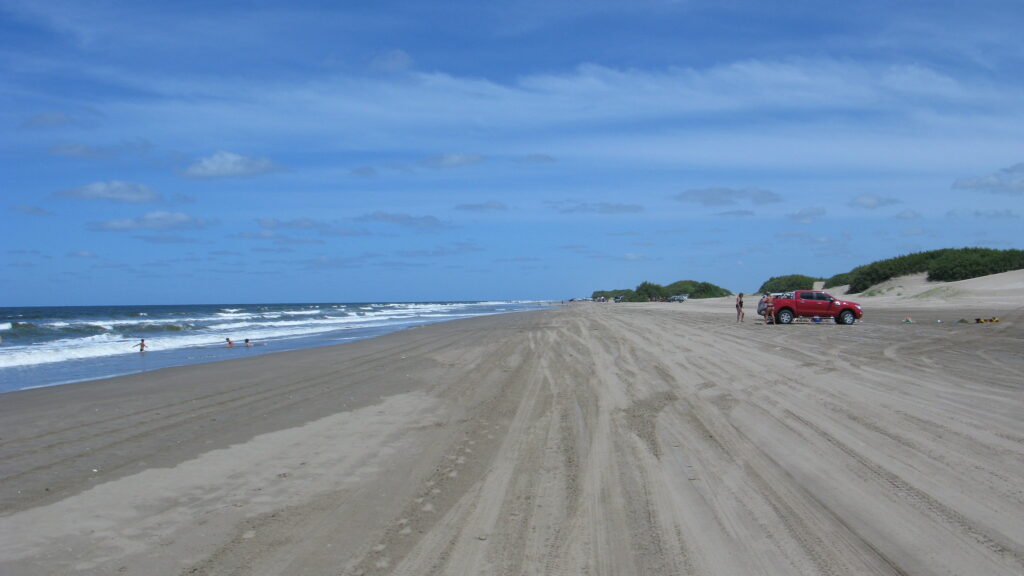
The region also includes a variety of geographic areas, from the northern San Clemente del Tuyú to the southern Mar de Ajó, each offering different experiences for tourists.
The Partido de la Costa is the easternmost municipality of Buenos Aires province, bordered by the Bahía de Samborombón to the north and the Argentine Sea to the east. It is divided into several geographical zones, each with notable towns such as San Clemente del Tuyú, known for its tourist attractions, and San Bernardo, famous for its nightlife.
Whether you’re looking for vibrant urban centers or tranquil beach retreats, the Costa Atlántica has something for everyone.
2. Tandil
Tandil, located near the Sierras de Tandil range in central Argentina, is a charming town known for its beautiful landscapes and rich history. Founded in 1823 by Brigadier General Martín Rodríguez, Tandil has grown significantly and now has a population of over 170,000.
The town’s economy is primarily based on agriculture, livestock, metallurgy, commerce, and tourism, with a notable increase in technology companies in recent years.
Tandil offers a temperate climate with an average temperature of 13.4°C, making it an attractive destination year-round. The town is famous for its picturesque hills, such as Cerro Centinela, which features a curious rock formation.
Other popular tourist spots include Parque Independencia, the Calvario, and the Lago del Fuerte. These natural and historical sites provide plenty of opportunities for outdoor activities and exploration.
In addition to its natural beauty, Tandil boasts a thriving culinary scene with a wide range of restaurants, cafés, and bars. The town is also known for its high-quality hotels and accommodations, ranging from historic establishments to modern facilities.
Whether you’re interested in hiking, enjoying local cuisine, or exploring historical landmarks, Tandil offers a diverse array of activities and experiences for visitors.
3. Tigre
Tigre, located just 32 kilometers from Buenos Aires, offers a perfect escape from the bustling city life. This charming town is known for its network of islands, canals, and rivers within the Paraná Delta. Tigre’s natural beauty and unique geography attract over 5 million visitors annually, making it one of Argentina’s top tourist destinations.
The Delta is an ecological paradise where human activity harmoniously coexists with nature. Visitors can explore the lush vegetation, navigate the waterways, and appreciate the island architecture.
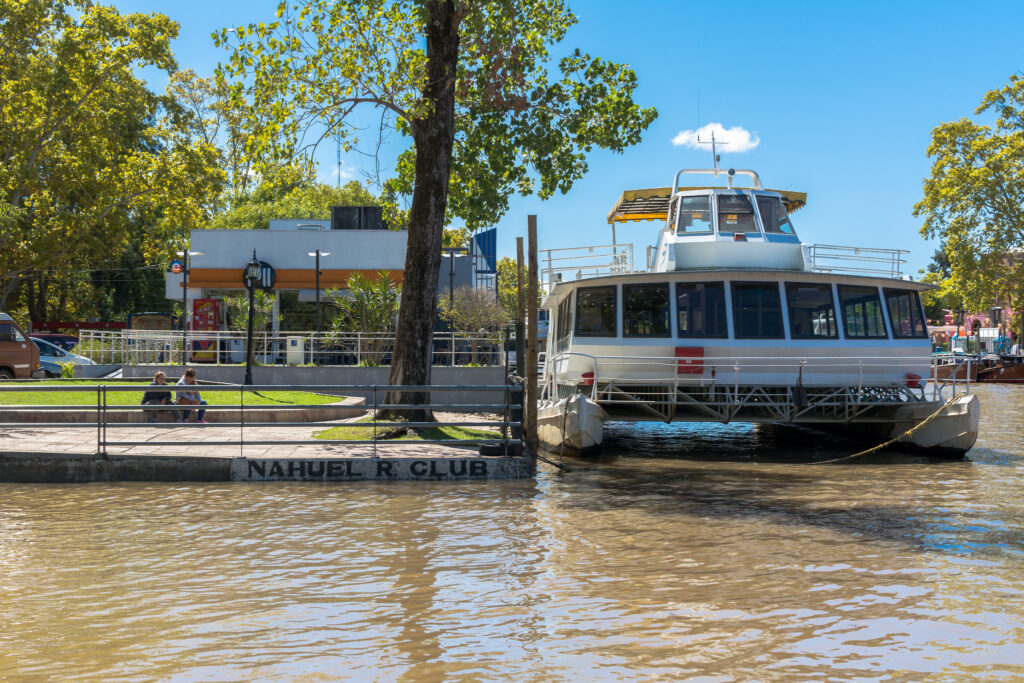
Activities like boating, water sports, and nature adventures are popular here. Besides the Delta, Tigre boasts other attractions like the Puerto de Frutos market, the Paseo Victorica, and the Museo de Arte de Tigre, offering a mix of shopping, dining, and cultural experiences.
Tigre’s rich history dates back to colonial times and includes significant events like the fights for independence. Today, it remains a vibrant cultural hub with a diverse array of activities.
From visiting the historic Camino Real to enjoying the local cuisine and hospitality, Tigre provides a multifaceted experience for all types of travelers. Whether you’re looking to unwind or seek adventure, Tigre is a must-visit destination near Buenos Aires.
4. Chascomús
Chascomús, located just over 120 kilometers from Buenos Aires, is a perfect weekend getaway. Known for its beautiful lagoon, Chascomús offers a tranquil escape where visitors can enjoy leisurely walks along the waterfront, relax at local bars, or engage in outdoor activities like running and cycling. The lagoon is also a favorite spot for fishing enthusiasts.
The town is steeped in history, with notable landmarks such as the Clorindo Testa-designed monument commemorating 25 years of democracy and a statue of former president Raúl Alfonsín, who was born and raised in Chascomús.
Visitors can also explore the historic “Casa de Casco,” the Capilla de los Negros, and the colonial-era municipal building, all of which offer a glimpse into the town’s rich past.
Chascomús is not just about history and nature; it also offers a vibrant cultural scene. The city is home to the Cathedral, the Museo Pampeano, and the Fuerte San Juan Bautista, providing plenty of opportunities for cultural enrichment.
Whether you’re camping by the lagoon or exploring historical sites, Chascomús is a destination that combines relaxation, history, and culture in a charming rural setting.
5. Bahía Blanca
Bahía Blanca, known as the Gateway to Patagonia, is a significant port city located in the southwest of Buenos Aires province. The city’s central square, Plaza Rivadavia, is surrounded by grand 19th- and early 20th-century buildings like the Palacio Municipal.
Bahía Blanca is rich in cultural and historical sites, including the Museo y Archivo Histórico and the Museo del Puerto de Ingeniero White, which document the lives of immigrants and the city’s maritime heritage. The city serves as a vital commercial, cultural, educational, and sports hub in the interior of Argentina.
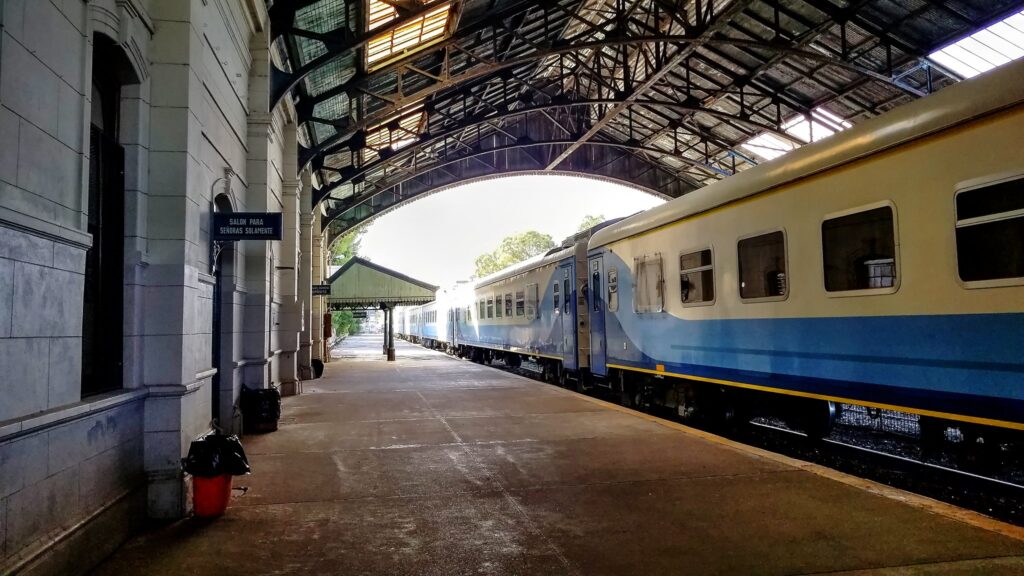
Founded in 1828 as “Fortaleza Protectora Argentina” by Colonel Ramón Bernabé Estomba, Bahía Blanca has evolved into a bustling urban center with significant infrastructure, including major transport and communication networks. The city is strategically located, connecting the economic flows of the southwest Buenos Aires province and the Vaca Muerta shale oil and gas field.
Its proximity to the deep-water commercial port of Ingeniero White enhances its regional, national, and international trade relations. The name “Bahía Blanca” refers to the white saline efflorescences that cover the low-lying coastal areas near the city.
Tourists visiting Bahía Blanca can explore its historic center, the Tango Route, numerous parks and plazas, and various museums such as the Museum of Fine Arts, the Historical Museum, and the Ferrowhite Railway Museum.
The city is also known for its vibrant basketball culture, with a history of the sport dating back to 1910 and notable players like NBA star Emanuel Ginóbili originating from here. With its blend of historical charm and modern amenities, Bahía Blanca offers a unique gateway experience to the Patagonian region.
6. San Antonio de Areco
San Antonio de Areco is a picturesque town on the Areco River, renowned for its rich cultural heritage and gaucho traditions. Located just 120 kilometers from Buenos Aires, it is easily accessible by car or bus.
The town’s central square, Plaza Arellano, is surrounded by key buildings such as the police station, town hall, civil registry, and the San Antonio de Padua Church. Nearby, visitors can explore the Draghi family silver workshop and museum, which houses an impressive collection of 19th-century gaucho silverwork.
Areco is known for its vibrant artisan scene along the Ribera de Areco, where visitors can find stalls selling handcrafted goods such as silverware, leather products, and ceramics.
The town also boasts several historic sites, including the Ricardo Güiraldes Gaucho Museum, set in a traditional estancia, and La Blanqueada, a historic pulpería that offers insights into the local culture. Outdoor enthusiasts can enjoy a leisurely day by the river, where there are public barbecue grills and a weekend artisan market.
The culinary scene in San Antonio de Areco is diverse, with options ranging from traditional pulperías and parrillas along the river to more eclectic dining experiences at places like Mestizo and Rossita.
For those looking to experience the countryside, many visitors opt for day trips to local estancias, where they can enjoy authentic gaucho activities and meals. San Antonio de Areco offers a perfect blend of history, culture, and rural charm, making it a popular destination for those seeking an authentic Argentine experience.
7. San Andrés de Giles
San Andrés de Giles is a charming town located just 103 kilometers from Buenos Aires, making it an ideal destination for a weekend getaway. The town is known for its agriculture and livestock industries, with notable presences in food processing, a significant paper mill, and pork processing industries.
It is the fifth-largest pork-producing region in Buenos Aires province, housing two major pork processing plants, one of which is the second largest in the country. This economic backbone supports a serene, rural lifestyle that attracts visitors seeking a peaceful retreat.
The town itself offers a variety of activities for families and tourists. The well-maintained central plaza, featuring the historic San Andrés Apóstol Church and the Municipal Palace, is a highlight. The Dr. Fernando Lillia Municipal Park provides ample space for sports and outdoor activities.
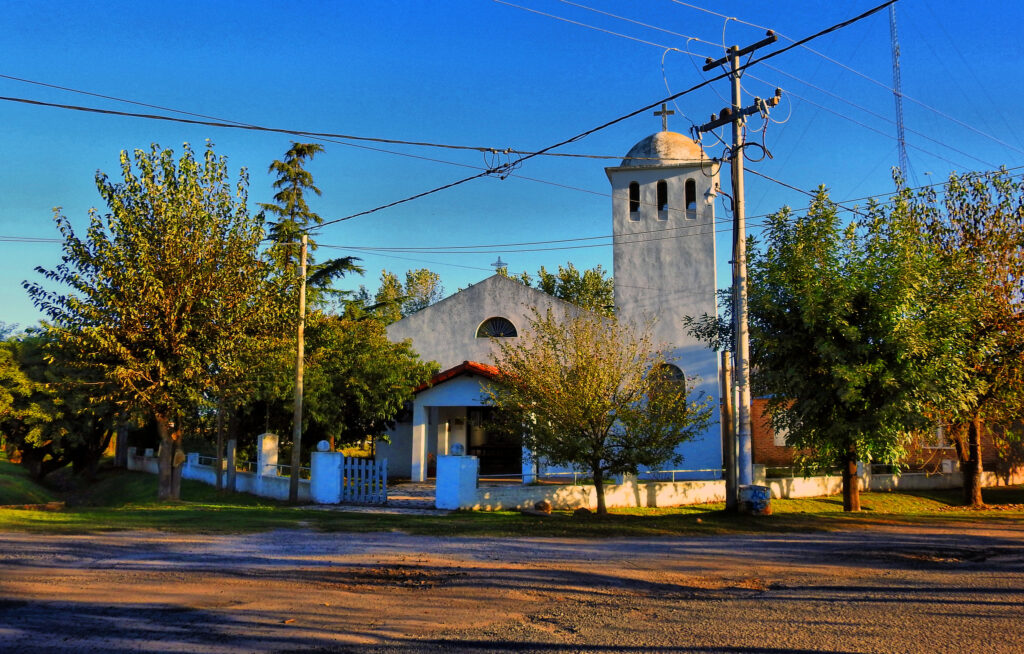
Additionally, the Estancia La Merced, or Posta de Figueroa, holds national historical significance. This estancia was the site where Juan Manuel de Rosas signed the “Carta de la Hacienda de Figueroa,” an important document in Argentine history.
San Andrés de Giles also boasts several delightful dining options. One notable spot is the Bar Restaurante La Familia, located across from the plaza, which offers a cozy atmosphere and traditional dishes.
Visitors often pair a visit to San Andrés de Giles with a trip to nearby San Antonio de Areco, taking advantage of the close proximity of these two picturesque towns to explore more of the rural charm and historical sites of the Buenos Aires province.
8. Capilla del Señor
Capilla del Señor, the administrative center of Exaltación de la Cruz, offers a unique blend of history and rural charm just a short drive from Buenos Aires. As the first town in Argentina to be declared of national historical interest, it preserves much of its original architecture and traditional lifestyle.
Visitors can reach Capilla del Señor by car via the Panamericana Highway to Route 8, then Route 39, or by train and bus from Buenos Aires. Walking through its streets, one can explore the old cemetery in the town square, the historic Miralejos house, the Roma salon, and the former social club of immigrants.
The town is also home to the Museo de Periodismo Bonaerense, which showcases antique typewriters and printing presses, along with artifacts from daily life in earlier times.
The surrounding landscape, with its rolling hills, eucalyptus groves, and picturesque farmlands, adds to the town’s charm. The area features numerous estancias, dairy farms, and horse breeding establishments, providing plenty of opportunities for outdoor activities and relaxation.
Capilla del Señor offers a variety of culinary delights. Popular spots include La Fusta, a local favorite, and Dulcinea, known for its specialty dishes cooked on a disc and a beautiful patio perfect for summer dining.
The town also hosts several annual events, such as the patronal festival on September 14 and a mountain bike rally, adding to its appeal as a weekend destination. With its rich history, scenic beauty, and inviting atmosphere, Capilla del Señor is a perfect escape from the hustle and bustle of city life.
9. San Miguel del Monte
San Miguel del Monte, commonly known as Monte, is a historic town in the Buenos Aires province, renowned for its beautiful lagoon and numerous recreational activities. The Laguna de Monte is a popular spot for fishing, water sports, and relaxation, surrounded by restaurants, green spaces with picnic areas, and several campgrounds.
The town’s waterfront, Juan Manuel de Rosas Promenade, becomes a lively hub at night with bars and restaurants famous for their grilled chivito and other traditional Argentine meats.
One of Monte’s unique attractions is the Cristo de la Esperanza, a 2.1-meter tall sculpture carved from ash wood by local artist Pablo Bagnat. This statue, inaugurated in 2010, is a treasured part of the town’s heritage.
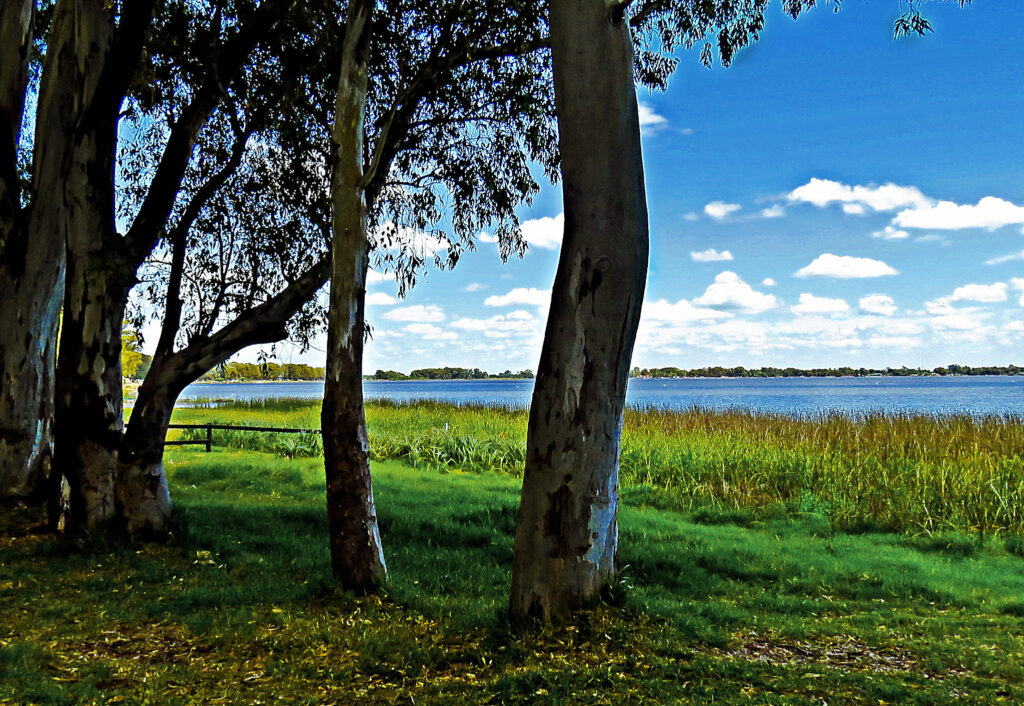
Another notable site is the Parroquia San Miguel Arcángel, a colonial-style church with a rich history dating back to 1863. The church’s interior features a remarkable retablo depicting the Resurrection of Christ, alongside figures of San Miguel Arcángel, the town’s patron saint, the Immaculate Conception, and Saint Joseph with the infant Jesus.
San Miguel del Monte is also home to a monument dedicated to Ubaldo Matildo “Pato” Fillol, an illustrious former footballer born in the town who excelled as a goalkeeper for River Plate, Racing Club, and the Argentine national team, winning the World Cup in 1978.
Created by local artist Javier Sotuyo, this 4-meter-long sculpture is a significant landmark. With its historical buildings, scenic lagoon, and vibrant cultural life, San Miguel del Monte is a perfect destination for a relaxing and engaging weekend trip.
10. Termas del Salado
Termas del Salado, located in the town of General Belgrano, offers an ideal retreat for relaxation and rejuvenation just 150 kilometers from Buenos Aires. This private thermal park features high-mineral-content waters that emerge from a depth of 964 meters at a temperature of 41°C.
The park includes one covered pool and three semi-covered pools with temperatures ranging from 34 to 40 degrees Celsius. During the warmer months of spring and summer, two additional natural water pools are available, making it a versatile destination year-round.
The thermal waters at Termas del Salado are renowned for their therapeutic properties, attributed to their high concentrations of sodium, calcium, and sulfate. These minerals are known to stimulate digestive functions, enhance skin defenses, and aid in the recovery of muscle injuries and bone trauma.
The complex provides a range of services to enhance the visitor experience, including a spa, relaxation areas, children’s play areas, dining options, and facilities such as lockers, showers, and dressing rooms.
Easily accessible from Buenos Aires and La Plata, Termas del Salado is situated along the banks of the Salado River at Av. Intendente Ferrer and Camino de la Rivera. The park is open from Friday to Sunday and on holidays, offering a perfect getaway for those looking to unwind.
Whether you’re seeking the healing benefits of thermal waters or simply a peaceful environment to escape the city’s hustle and bustle, Termas del Salado is a must-visit destination for a restorative weekend break.
Last Considerations
Are you ready to explore beyond the bustling streets of Buenos Aires and discover the gems of Argentina’s largest province?
From the serene countryside of San Antonio de Areco to the picturesque hills of Tandil, the relaxing thermal baths, or the tranquil waterways of the Tigre Delta, there are countless destinations waiting for you just outside the city. For those willing to invest a bit more travel time, the iconic Atlantic Coast offers unforgettable beach experiences.
With tourist agencies and public transport making these spots accessible, and well-signposted routes ensuring a smooth journey, your next adventure is closer than you think. Don’t forget to carry a map along with your GPS.
Let ExpatPathways guide you to these amazing places for an unforgettable escape.
(Featured Image Source: Fernando SISMONDA/flickr.com)


